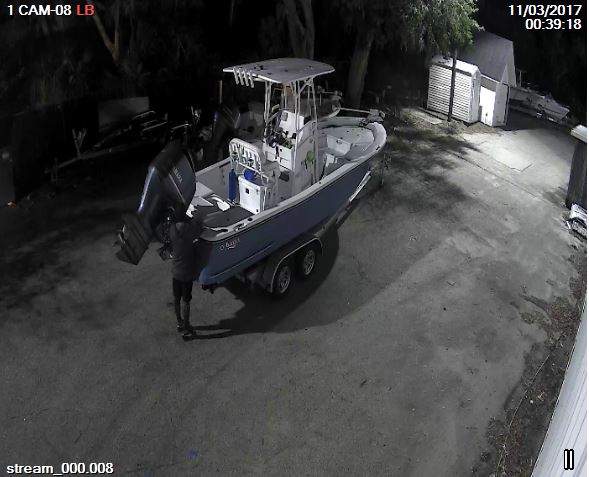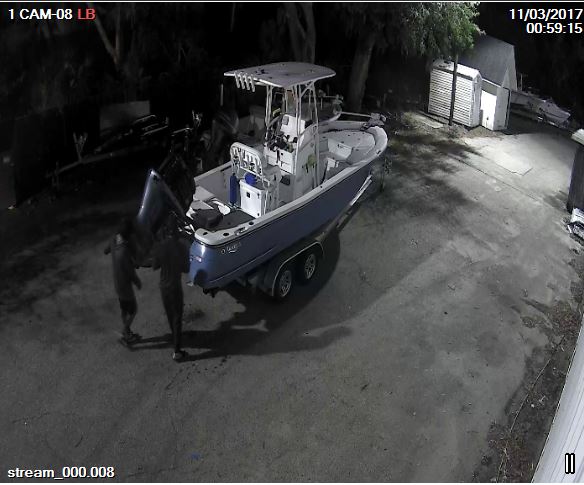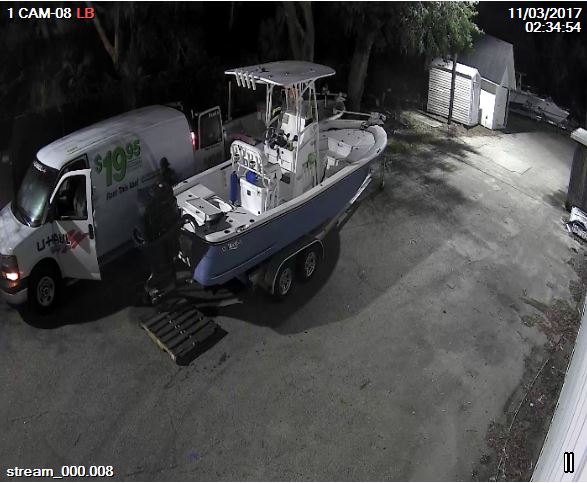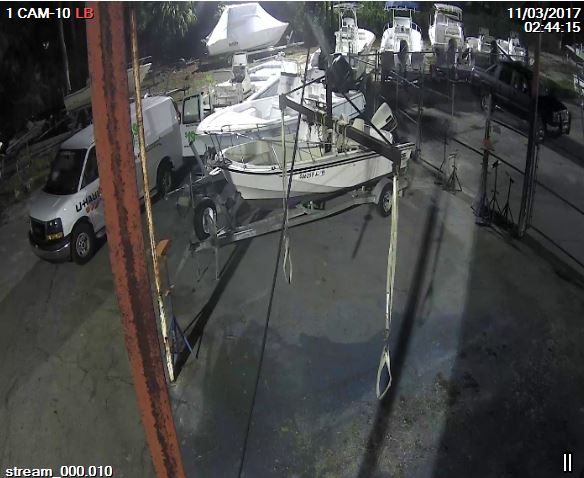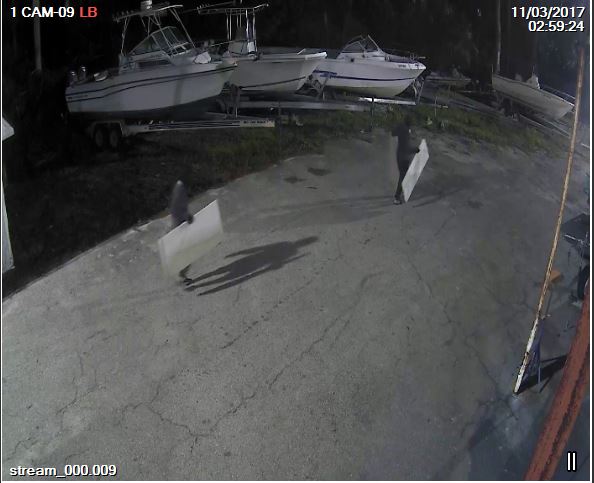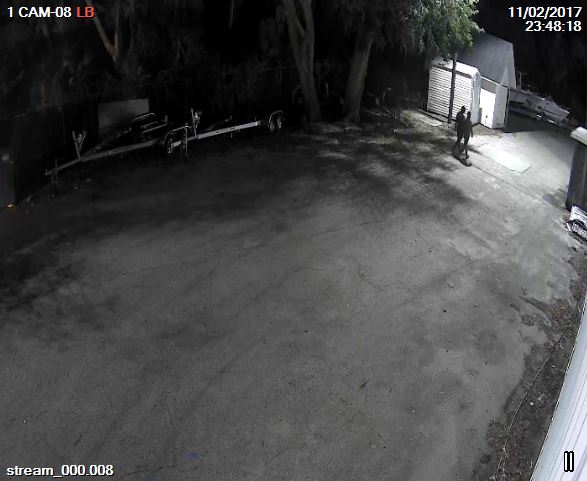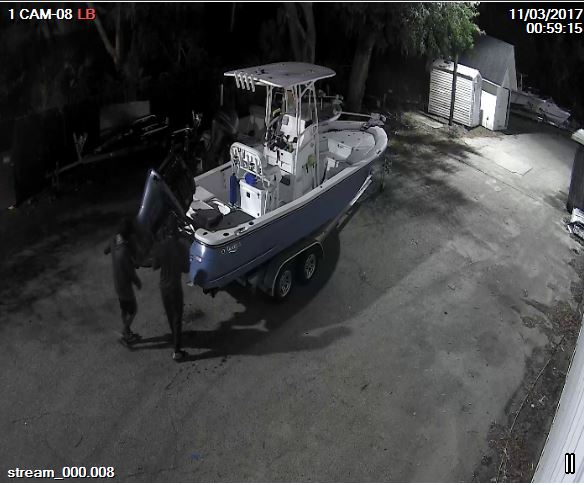
Don’t Be a Victim – Preparing Boatyards and Marinas Against Theft
Published on May 1, 2019Marinas that aren’t worried about theft should be. There are two groups of marinas when it comes to thefts: those who have already been victims, and those who will be eventually. Theft, marine theft in particular, was big business back in the 80s, though marine theft was limited mostly to a few bad actors or owners who were upside down on the mortgage and needed to “sell” the boat to their insurer. The market still sees some of that, but now is certainly not then. Now, it is cartels and other nefarious groups that have decided that marine electronics, outboards and boats are easy theft, and boatyard security, or lack thereof, provide an absolutely perfect backdrop for their crimes.
In March 2019, more than 140 marine investigators from all over the world met in Biloxi, Mississippi, at the International Association of Marine Investigators (IAMI) three-day annual training seminar. Part of that meeting was intense training, and the other was an in-depth review and discussion on current theft trends in America and around the globe. The takeaway from that meeting is that marine theft is a serious issue that will affect many parts of the industry. This article will define the problem and possible solutions or roadblocks to help eliminate these crimes.
Outboard and GPS Theft
What is being stolen: high dollar value center console sportfisherman, high horse power, primarily Yamaha outboards (200HP and up) and GPS/Chartplotter units (primarily Garmin).
How big is the problem? That is difficult to quantify entirely, but according to statistics gathered by IAMI, it is estimated to be in the range of $100 million per year with the vast majority of that coming from the U.S. and western European countries. This impacts everyone in the marine industry, from the boat owners and marinas to the marine insurers and law enforcement.
What is the typical MO (modus operandi)? Well, that depends on what was stolen, where and when. According to Lietenant Nancy Alvarez of the Monroe County Sheriff’s Office (ground zero for the marine theft epidemic in Florida), the thefts are occurring in storage yards, with vessels hauled and blocked and sometimes in the water.
“Boats on trailers, obviously are targets of opportunity. It all depends on the thieves’ shopping list. Make no mistake, when I say shopping list, I mean shopping list. The thieves regularly bypass certain items and target specific items. They know what is new and hot and what is already outdated and less of use or value. They will bypass a row of four Mercury Verado 350’s to target two Yamaha 300’s on a boat down the row. They do their research, have field intelligence and counter surveillance watching facilities to see what ‘comes on the market’. This is a sophisticated and well organized group,” Alvarez said.
Basically, the thefts can be categorized into three buckets.
Vessel theft in southern latitudes is mostly in connection with smuggling operations. Many stolen boats end up in Mexico (or beyond), according to Todd Schwede of Todd & Associates, a specialist in marine theft and the originator of stolen boat reward fliers. The average size is 28 to 38 feet, twin or triple outboards. Recovery from a foreign country is nearly impossible. This has resulted in many domestic underwriters refusing to insure these types of boats or, at the very least, vastly increased premiums.
Next is targeted GPS and outboard thefts. Recently, several high value electronic units were stolen from a marine dealer. The boat involved had just been transported to a Florida yard for service before sale by the broker, only days before the theft. The boat was blocked ashore and placed in a well-secured guarded and gated marina. Under the cover of darkness, three (3) Garmin GPSMAP 8617 17-inch HD display units along with other items, were surgically removed from the center console. The replacement cost of this single theft was well in excess of $30,000.
This is not an aberration. This is happening all over Florida. But what was once seen as a Florida problem has now become an I-95 corridor problem, extending into North and South Carolina and as far north as Cape Cod, Massachusetts. Unfortunately, the theft problem is moving west into Texas, north up the Mississippi and beyond, so no one area of the country is exempt. No one yard is safe. And thieves are taking half a dozen units or more per night.
Just ask Alex May of MJM Marine and Ronnie’s Marine, a Houston- and South Texas-based retailer who, in the course of a single year, had more than half a million dollars of Yamaha outboards stolen from his four Texas retail locations. Thieves broke into his yards, cutting fencing, defeating locks and security measures and stole new stock motors (in the boxes), as well as engines from customer vessels in the yard for storage or repair. In his case, most of his immediate economic loss was covered by insurance, but the loss was more than that. It incensed him. It was a violation. At the end of the day, it cost his company added labor, increased insurance premiums and higher security costs to fortify his facilities.
Here, the typical MO is that an advance reconnaissance team and perpetrators will gain entry into a yard at night and will methodically unbolt outboards and disconnect harnesses making the units ready for what comes next. Once counter-surveillance has done its job, the thieves will break into the yard using a truck or a van (usually driving right through the gate or the side fence) and within minutes, a team of two or three guys in hoodies will go from boat to boat and muscle the units off the transoms and slide them into the truck or van. They are literally in and out in less than 30 minutes with six to eight outboards worth $150,000 to $200,000. Not bad for a night’s work. Lt. Alvarez notes that “stolen Ford F250-350’s seem to be the vehicle of choice along with rented U-Haul vans.”
It is a shame that we have to think of boatyards as high security risks, but given the high value property and the increased frequency of these crimes, the marine industry needs to change its mindset and act accordingly.
So what can a boatyard or marina do to combat this growing epidemic? Three more buckets, starting with security, physical barriers and legal or contractual protection. If a marina thinks it is secure because it has a fence around the yard, think again. Chain link fences are no match for a speeding van or a set of bolt cutters. In almost every case, the thieves cut through the fence, drove through or over the fence and made off with the loot.
Theft Exposures
Security involves stepping back and taking a hard look at a facility’s exposure. Planning and executing a security plan involves teamwork with employees, ownership, third-party providers and the local law enforcement.
Consider these exposures:
• a row of beautiful tempting treats lined up in front of the showroom outside on a major thoroughfare, each with a pair of 300HP outboards on back;
• unlocked trailers;
• lack of gates and fences and lighting;
• alarms—does the alarm have a motion sensor that has been turned off, after receiving hundreds of false alarms? Is the alarm a central call station (calls the police or a third party monitoring service) or a passive system where owners go in the next day to find out the facility have been broken into and all it has to show for it is a video of a few guys in hoodies robbing the facility blind?
Facilities that have any of the above need to rethink their security protocols.
Get quality surveillance cameras and mount them high so they can’t be tampered with. Keep the lenses free of debris and check them regularly. Call the local police department, and if possible have them come to the facility and do a security check, so they can better understand when something looks wrong or out of place. Owners and operators and their employees are their best guard dogs. Call the police when things just don’t look right. Lt. Alvarez said, “Remember, in most cases, the crooks are doing advanced scouting, so be aware of who is walking around in your yard, parking in your parking lot and just hanging around for no good reason.”
One marina owner in Georgia has, quite literally, taken medieval steps to protect his property. After suffering a theft loss to customer boats in storage in his rear storage yard, he built a moat. Yes, a moat. Not one with alligators or fire breathing dragons, but he dug a trench about 5 feet wide and 3 feet deep around his facility so that the only way to physically gain entry by vehicle is through the front gate, which he has alarmed with a motion sensor array. It is one thing to unbolt a 450-pound outboard off a transom and slide it into a van. It is quite something else to muscle that outboard over a moat.
Lastly, let’s talk protection by contract for two different exposures. Marinas have first-party exposure and third-party exposure. First-party is the marina’s stuff. The property, inventory, owned boats and motors and the like. Third-party exposure is the facility’s legal obligation to protect its customers’ boats, motors and electronics. First-party is simple. If a marina suffers a theft loss, its insurance company pays the marina based on the language of the insurance contract.
Not so clearly defined is the third-party liability. The marina’s liability (denotes negligence) for its customer’s stuff, while it is in the marina’s care, custody and control. Simply put, when a marina’s customers leave their boats and equipment with the marina for service and or storage, a bailment for mutual benefit is created. They are receiving the benefit of the storage and or service, and the marina is receiving the benefit of the payment made by the customer for those services. Under this type of bailment the marina or boatyard, owe the duty of reasonable or ordinary care. That is, the marina owes its customers what would be the standard for that region. For instance, at the Philadelphia waterfront, having taken no security measures to safeguard customers’ property may be a problem. On the other hand, in rural Minnesota, perhaps, facilities don’t need razor wire and Dobermans.
The storage contract: An essential element in the defense of these cases is the storage and or service contract. All vessels and or other customer equipment in a facility’s care should be fully insured for both property and liability and come with a fully signed and properly executed storage agreement or work order that, among other things, includes a hold harmless agreement for damages due to theft, fire or other causes.
Consult local counsel for what works in each jurisdiction, but to keep it simple, stupid, hold harmless agreement sections, where one party is giving up legal rights, must be in bold plain language. There should be a separate signature or initial line next to or just below the hold harmless section to indicate that the person signing the agreement has read what he or she is signing and that he agrees to the terms of the contract. Signage at the service desk indicating that the marina is not responsible for loss by fire or theft is equally important. Encourage boat owners to remove valuable items before the vessel is left in the marina’s care.
Marinas and boatyards are idyllic places. Beautiful, serene and fun places where boaters enjoy the waterfront and time on the water. Unfortunately, they have also become targets of opportunity for random thieves and cartels alike. The marine industry must all be vigilant and do its best to help minimize the exposures and loss.
Dan Rutherford is director of Claims and Risk Management at Maritime Program Group. He is a Certified Marine Investigator and has conducted more than 10,000 marine investigations and recovered more than $20 million in stolen vessels in his 35 year career as an investigator. He can be reached at 603-606-4633 or drutherford@maritimepg.com.
| Categories | |
| Tags |






